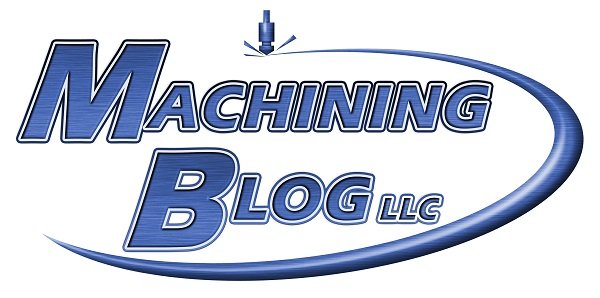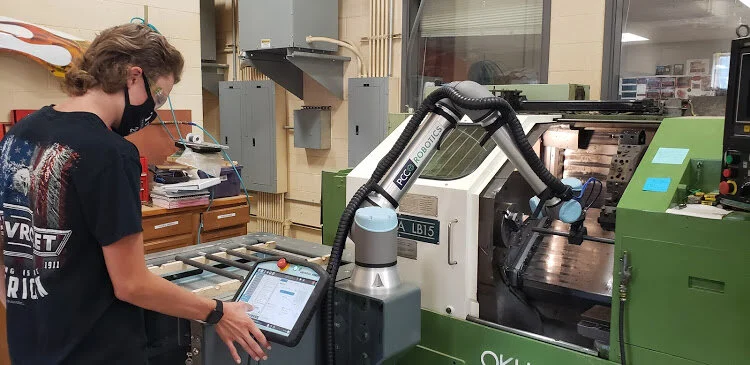Connecting a Cobot to a Vintage CNC Mill
A cobot can add a lot of value to the manufacturing process in a machine shop. It can increase the productivity of the CNC machine, while also contributing to process accuracy and consistency. Cobots can be easy to program and are safe to use.
A robot Interface.
Buying a new CNC machine and a cobot automation package has become increasingly popular, but here we will address how to hook up a cobot to a used or vintage CNC machine.
For an example of a cobot install we chose to write about a Milltronics 2016 CNC mill with a Milltronics 8200 control being equipped with a Fanuc cobot. The machine is about eight years old at the time of the cobot install. Along with the cobot install there was valving added to control the fixturing on the rotary table, stationary vise, and the auto door.
While using the discrete I/O which is wired inputs and outputs that are already existing on the machine they were wired to ethernet IP cards. The robot connects to the card and controls them as an Ethernet IP adapter. This allows for the robot to be the master and it controls the device as an adapter on a read and write level.
This setup allows for the robot to be moved to another CNC machine by unplugging the ethernet cable that goes to the machine. For example, the robot can also be utilized on the shop’s twenty-year-old Mori Seki CNC lathe. For that installation there will be signals that will be available on the machine that are utilized.
When things are done in this nature, it takes an integrator that understands electrical schematics on the machine tools. Not every machine tool builder does things the same way, so it takes an integrator that thinks creatively, in terms of the technology. That integrator would use the available signals at the machine and try to bring that to what is used today and into the future.








